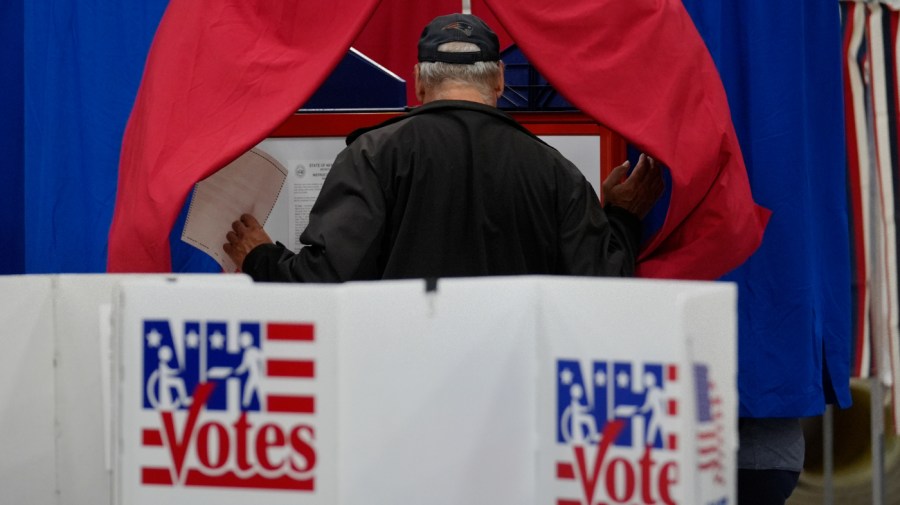
Last Monday, the New York Times published a series of polls showing former President Donald Trump leading Vice President Kamla Harris in the three “Sun Belt” swing states — Georgia, Arizona and North Carolina.
Trump’s lead in those states exceeds the margins that either Trump or Harris had previously held in these same states. Further, in Arizona (+5) and Georgia (+4), Trump’s lead is also greater than the margin of error, with North Carolina (+2) being slightly closer.
Yet just a few days after the New York Times released its data, Bloomberg-Morning Consult released swing state polls of their own. Per their survey, Harris is leading by 3 points in Arizona and 2 points in North Carolina, with Georgia tied.
It is normal for two similar polls to show slightly different results, but those swings between the two — 8 points in Arizona and 4 points in North Carolina and Georgia — are not trivial.
I cite these examples because they underscore a fundamental issue with forecasting this election. We really do not know, with any degree of precision, who is ahead and who is trailing in the presidential election.
This is particularly evident in the variations between swing state polls and national polls. In the swing states, the two candidates trade leads depending on the poll, suggesting that neither candidate has opened up daylight against the other.
However, national polls such as Reuters’ most recent, show Harris with a 6-point lead (50 percent to 44 percent).
As I’ve written in this publication before, polls showing Harris’s strength may be overstated, even if, to her credit, she has made up ground that Biden had lost and improved her personal metrics.
Put another way, the race is significantly closer than some polls make it appear. When “silent Trump voters,” as well as pollsters’ general challenges in interviewing Republican voters are factored in, the race is likely a statistical tie. At best, Harris’s lead is significantly narrower than the 5 to 6 points that Reuters and NBC would suggest.
It is also worth noting that, as of right now, Harris’s lead per the RealClearPolitics average (49 percent to 47 percent) would actually represent her underperforming President Biden’s 2020 results by 2 points. Given that less than 50,000 votes in key states were the difference betwen victory and defeat for Biden, a 2-point national lead for Harris may not translate to a victory in the Electoral College.
To that end, swing state polling, in theory, should present a clearer picture than national polls, although, in this election, the polling averages are anything but clear.
Looking at each battleground state’s polling average on RealClearPolitics, Trump’s lead in Georgia is the only one greater than 2 points. And, in four of seven swing states, the lead is one point or less in either direction.
Individual swing state polls have only added to the challenges of making an accurate forecast. Consider polls in the “blue wall” states of Michigan, Pennsylvania, and Wisconsin, crucially important for both candidates. Quinnipiac University’s recent survey shows Harris’s lead exceeding the margin of error in Pennsylvania (51 percent to 45 percent) and Michigan (50 percent to 45 percent), but within the margin in Wisconsin (48 percent to 47 percent).
At the same time, polling conducted by The Hill/Emerson College paints a very different picture in those states, with Trump leading Harris in Pennsylvania and Wisconsin by one point each, and trailing Harris by 2 points in Michigan.
As Ashleigh Fields noted, Quinnipiac’s findings differ drastically from The Hill/Decision Desk HQ’s aggregate polling average, which shows “Harris leading Trump by less than a percentage point in Pennsylvania and Michigan” and by 3 points in Wisconsin.
A second, equally important challenge remains in trying to give an accurate forecast. Evidence has shown that in both 2016 and 2020, Republicans were systematically underrepresented in polls, including the very real impact of the “silent Trump vote.” Polls almost always undercount Trump’s support, leading him to drastically overperform pre-election assumptions.
At this point in 2020, Trump trailed then-candidate Joe Biden by 7 points per the RealClearPolitics average. And, Reuters Battleground polling on the eve of the election showed Biden with comfortable leads in Wisconsin and Michigan (+10 each), as well as Pennsylvania (+7).
When the actual votes were counted, Biden won Michigan by just 3 points, Pennsylvania by 1 point, Wisconsin by less than one percentage point and the popular vote by 4 points — roughly half of the predicted result.
Similarly, in October 2016, three polls were released showing Clinton leading by 11 points in Michigan, 9 points in Pennsylvania and 7 points in Wisconsin. Trump won all three of those states, and ultimately the election.
In 2024, with Trump in his third election, it remains to be seen what extent the “silent Trump vote” is affecting polls. Perhaps there will be less pressure to conceal voting intentions, or more pressure given the ever-worsening polarization in our politics.
Ultimately, this race is too close to call. Consumers of polls, including both candidates, must realize that this campaign has a long way to go, and the true margin between the two candidates, at this point, is impossible to determine with any degree of accuracy.
Douglas E. Schoen is a political consultant and the founder and partner at Schoen Cooperman Research. His latest book is “The End of Democracy? Russia and China on the Rise and America in Retreat.”

